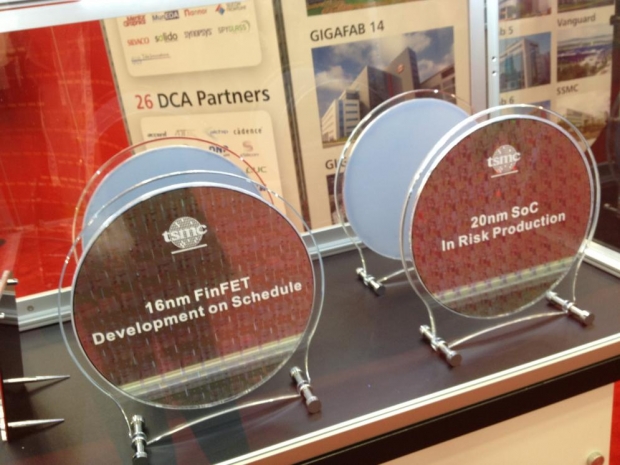Taiwan Semiconductor Manufacturing Company (TSMC) is planning to invest $500 billion Taiwanese dollars in an advanced chip factory. This translates to a saucy $16 billion USD, but the company declined to comment on the timeframe for the investment.
Traditionally, semiconductor manufacturers like GlobalFoundries, TSMC, and Intel invest billions of dollars in the new technologies, new nodes, and despite the investments some transitions go wrong. The most recent example is the transition from 28nm to 20nm manufacturing, which was was delayed by almost two years.
TSMC and Samsung have started manufacturing low-power A8 processors for Apple, while Samsung has some of its Exynos chips in 20nm. Qualcomm is getting its first Snapdragon 810 20nm chips as we speak and we expect vendors to start shipping devices based on the new chip in March.
We have learned that high performance discrete GPUs will never make it to 20nm, simply as process has too much power leaks and poor yields with big cores. The GPU industry will move to 16nm FinFET at TSMC in 2016, or 14nm with Samsung and GlobalFoundries at about the same time. After 16nm FinFET, TSMC is planning to transition to 10nm as early as late 2016, but we believe that this is very optimistic timing.
A $16 billion investment may sound like a lot of money, but Intel has invested more than $6 billion in Israel based fabs since 2006. Intel is right now preparing Israel fabs for 10nm, while Ireland is manufacturing most of Intel's 14nm SoCs right now. The next node after 10nm for Intel is 7nm, probably happening before the end of this decade.
Back in 2009 in Albany, New York state, GlobalFoundries executives and chaps from The College of Nanoscale Science and Engineering were telling us that each transition cost to a new node grows exponentially. Despite large R&D investments, it is getting harder to transition from 28nm to 20nm to 14nm. This is one of the reasons why Samsung and GlobalFoundries have joined forces for their 14nm push.




